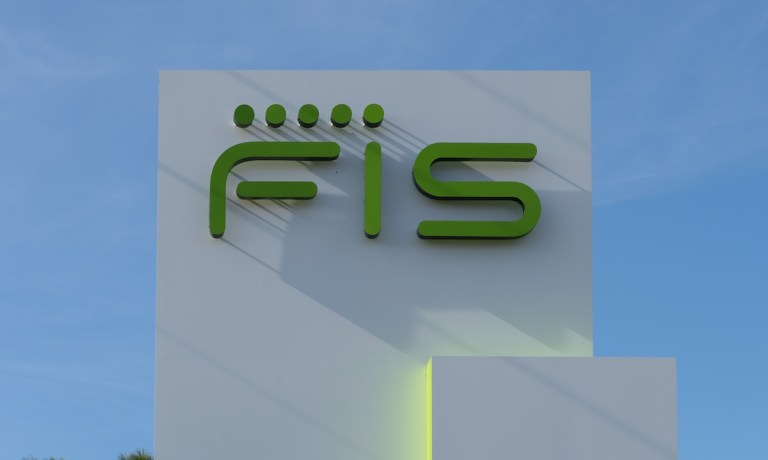
At its investor day Tuesday (May 7), FIS management outlined its continuing strategy to capture share in global money movement — a market worth hundreds of billions of dollars.
CEO Stephanie Ferris said during her initial remarks that the company’s business model is “underpinned by highly recurring revenue, allowing us to drive double-digit total return.” The collective total addressable market is worth about $200 billion. FIS’ own model derives 29% of its revenues from “money at rest,” 44% comes from “money in motion,” and 27% is tied to “money at work.”
The company reported Monday (May 6) that it posted first-quarter adjusted revenue growth of 3% to $2.5 billion. Recurring revenue represents 80% of that consolidated top line across banking and capital market solutions, Ferris said.
Macro trends are helping to buoy that growth, as Ferris said during the presentation that banks are facing competition from non-traditional competitors such as FinTechs and corporates, and the financial services industry itself has been marked by consolidation and a rising tide of cyber threats.
Among the most significant challenges facing providers, according to Ferris:
“Consumers want their financial products and services to be as readily available as their streaming services. They want their user experience to be as simple and seamless as their smartphones. And they want their financial services to be personalized to their specific needs.”
To meet these expectations, financial institutions, corporations and FinTechs are all looking to embed financial capabilities into the software and experiences they offer to their end users, she said.
She noted the cross-selling opportunities inherent in the FIS model, where more than 30% of capital markets clients buy more than one solution. New verticals offer more than 10% growth.
Chief Technology Officer Firdaus Bhathena said during his remarks that company initiatives include a push toward the public cloud, artificial intelligence scales across the enterprise and “the rapid assembly of plug-and-play solutions” for money movement along with the ambition to forge what he termed “a robust FinTech platform.”
“About 30% of our workloads right now are in the public cloud, and a full 90% are being run in our combined public and private cloud environments,” he said.
Delving into the banking solutions business, John Durrant, president of that unit, said that about 60% of all large and regional banks in the United States are FIS core banking clients. The firm’s payments technology processes over 17 billion transactions annually, where 70% of FIS’ core banking clients process debit cards through the company’s payment products.
With reference to the “money at rest” in deposits and other accounts, he said the company’s platforms help administer about $8 trillion in assets.
Durrant reiterated guidance from the Q1 earnings call, which stated that the company should see 3% to 3.5% in revenue growth in the banking solutions segment.
Cross-selling with the capital markets solutions segment represents a $300 million opportunity for the banking operations, Durrant said. Commercial agreements held in place through the company’s continued stake in Worldpay will also help cement growth.
Durrant also noted that the company’s new Atelio platform will give “scaled distribution into white spaces like FinTechs and software vendors.” (Other management commentary later during investor day noted the opportunity tied to embedded finance and in providing services such as card processing, identity management and transaction monitoring.)
In discussing digital initiatives, Durrant said the company’s large bank digital business is growing at double-digit rates, and there are eight banks in a pilot for its new mobile product, a number that should ramp up materially.
“FIS is benefiting from a number of industry tailwinds that will help accelerate our growth in the payment space,” Durrant said. “Regulatory changes such as Reg II are opening up more cards to our network. The increasing digitization of payments is opening up our TAM. And we capitalize on all of these tailwinds.”